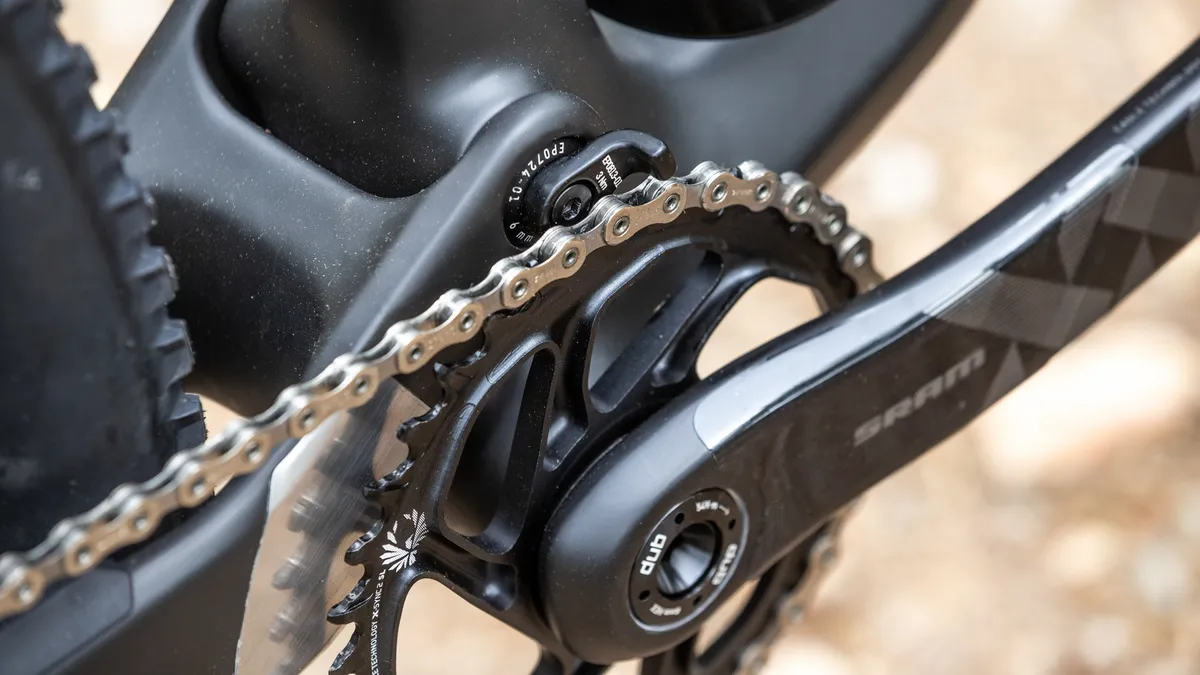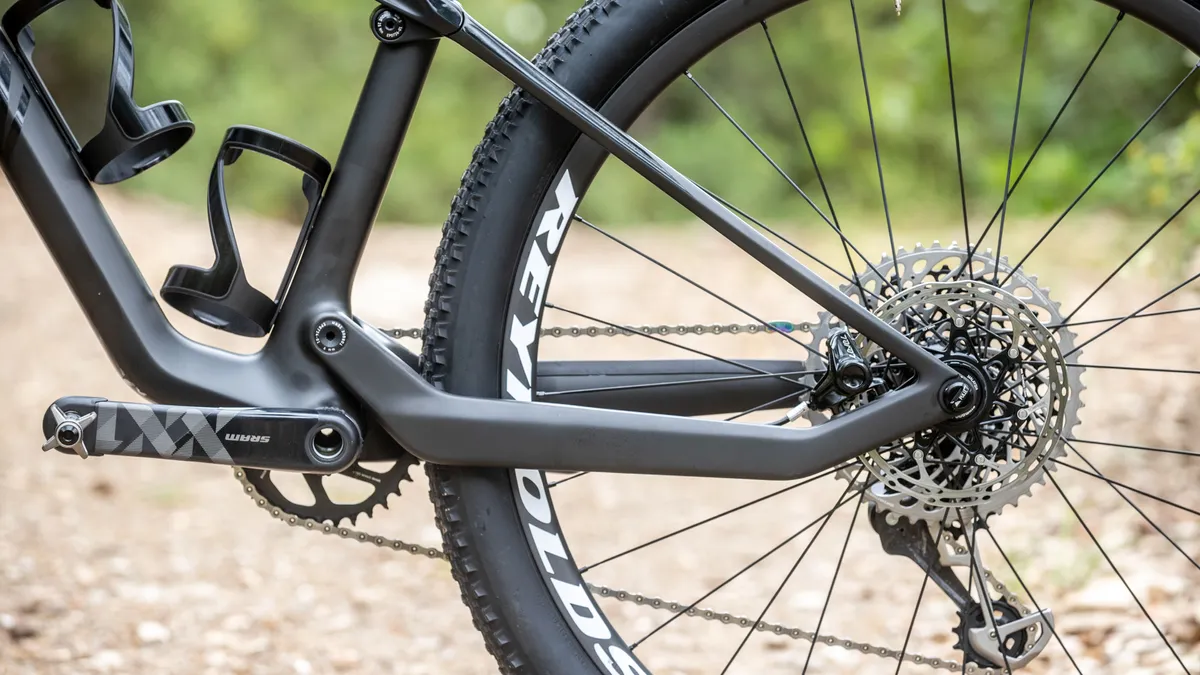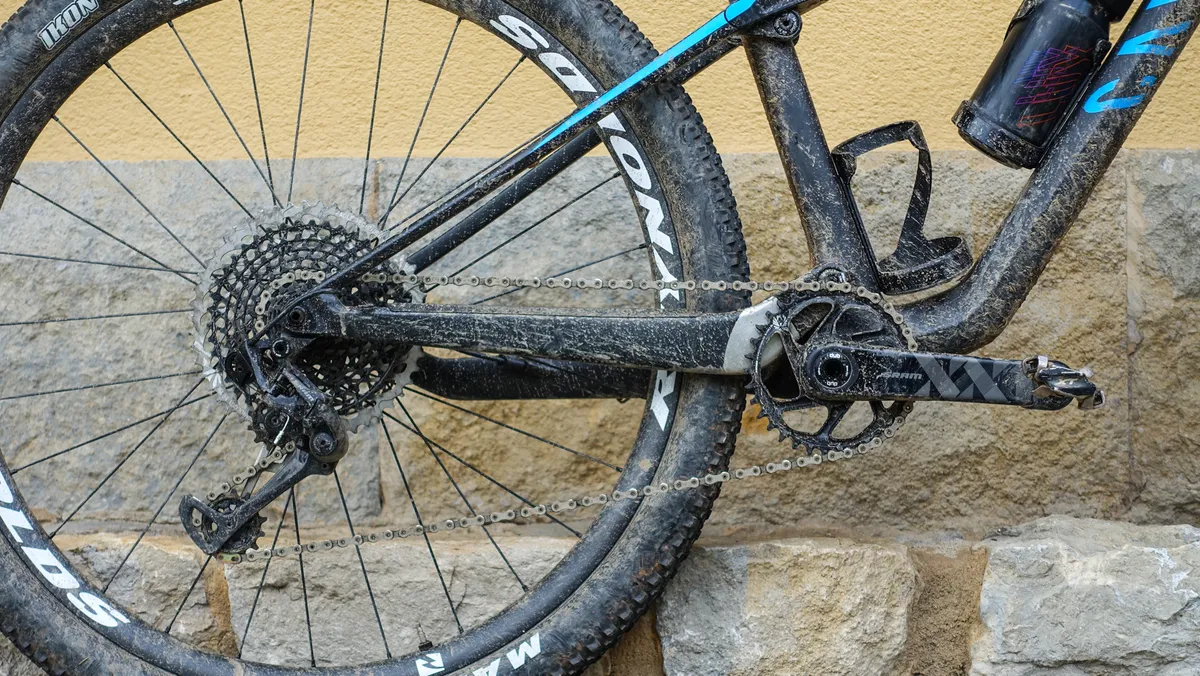Canyon’s all-new Lux is 1x-specific. In 2018, this isn’t all that unusual, but Canyon is one of the few brands that still offers multi-chainring builds on many of its mountain bikes.
Keen to learn more, I spoke to one of Canyon’s engineers, who rather than confirm the usual assumptions about it being a market-driven choice, gave some interesting insight into the engineering rationale behind this move.
Check out our first ride review of the new Canyon Lux on our YouTube channel
A lighter and more efficient design
Canyon claims that making room for a front derailleur in a 2x setup actually means compromising on frame performance, as the drive side main pivot bearing must be placed very far inboard, close to the center plane of the frame.
This means that the rear end is attached asymmetrically and that the bearings must be placed very close together, which results in a loss of lateral stiffness.
This asymmetrical placement and the additional stresses of chain load also means that the the drive side bearing takes the bulk of the load, requiring oversized bearings and more material to support this extra force. This is obviously far from ideal if reducing weight is your primary goal.

Going 1x on the new Lux allowed Canyon to widen the main pivot bearing placement by 78%, meaning it could spec smaller and lighter bearings, all while increasing durability and stiffness.
Going 1x-specific also allowed Canyon to integrate that neat little top guide that I was fond of into the main pivot bolt.
A perfect anti-squat tune
Building a bike around a double chainset requires a compromise with anti-squat performance as you can only optimize it for one of the chain rings, or somewhere in between.
A 1x-only setup keeps the chain positioned in a very small range and allows you to optimise the pedal performance more precisely.
The Lux is optimised for 34–38t chainrings, but will work with chainrings down to 30t, although this will result in anywhere between 5- and 10-percent less anti-squat depending on the size of the chainring.
(If none of that made sense to you, a good explainer on anti-squat and other suspension concepts can be found in our ultimate guide to mountain bike suspension.)

Losing a chainring also makes it easier to accommodate short chainstays, with them shrinking down to 435mm on the new Lux.
The 12-speed era is truly here
SRAM’s 1x-only 12-speed Eagle groupsets have become near-ubiquitous in the world of XC racing in recent years and Shimano has finally thrown its hat into the ring and fully embraced the 1x drivetrain with the arrival of XTR M9100 (yes, I am aware there is a 2x version, but that’s beside the point).
Now that both of the two main mountain bike drivetrain manufacturers have fully committed to 1x drivetrains, there should be fewer headaches surrounding compatibility for Canyon and other brands.
Is it a deal breaker for you?
So there you have it; the cycling industry at large isn’t just forcing 1x drivetrains on you for a laugh, there’s also sound engineering reasoning behind it.
Is being forced to go 1x on the new Lux a deal breaker for you or are you firmly committed to that single life? Be sure to leave your thoughts below!


